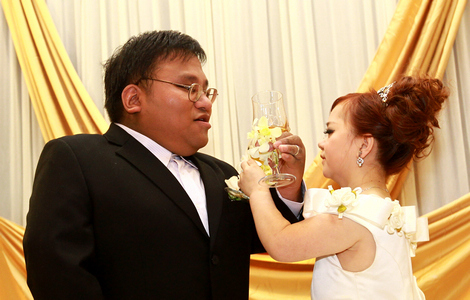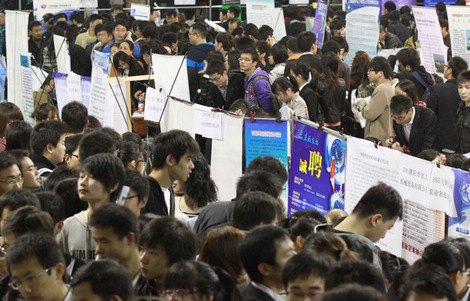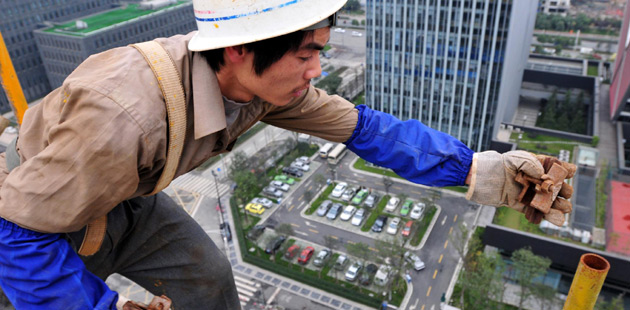End of the line for outdated Beijing trains
Updated: 2011-11-29 06:47
By Xu Wei (China Daily)
|
|||||||||||
 |
|
A typically crowded scene on Beijing Subway’s Line 1. Passengers have regularly complained about the standards of trains running on the line, which is Beijing’s oldest. Transport authorities have announced these old trains will be replaced by the end of the year. LI WENMING / FOR CHINA DAILY |
Zhang Wenqiang, an official from the Beijing municipal commission of transport, said on Thursday in an online interview with eBeijing, the city government's official website, that 19 trains that have traveled Line 1 since the 1990s will be replaced by the end of the year. They constitute the last group of old trains to operate on the Beijing subway system.
Passengers have long complained about the lack of air conditioning on some of Line 1's old trains - especially during the summer, said Hong Bo, an official from Beijing Subway Company.
Passengers take from 1.2 million to 1.3 million trips a day on the line, making it the busiest in Beijing's system.
The trains began to be improved in 2008. That year saw 20 old trains taken out of operation and replaced with trains that have air conditioners.
For passengers who regularly take Line 1, commuting is unpleasant at times, especially when the weather is hot.
"There's no wind and it's sweltering in the old cars," said Shao Yu, 24, who regularly takes the line. "I am always sweating."
She said she once fainted after being on the subway for 15 minutes, slumping onto the shoulder of a nearby passenger.
She said she later decided she would only take air-conditioned trains, even if that put her at risk of being late for work.
Zhang said glass walls will be built next year on lines 1, 2, 13 and the Batong line, which extends Line 1 to the east. They will act as a barrier between passengers waiting for a train on subway platforms and the trains. Those are the only lines in the Beijing system that now do not have such walls.
Beijing Line 1, which was put into use in 1971, and Line 2, put into use in 1984, are the oldest in the city.
Liu Tongliang, a senior official with the Beijing municipal commission of transport, said Beijing has put 8.5 billion yuan ($1.33 billion) toward making these two lines safer. Their signal system, trains and rails have all been improved.
In 2003, a new emphasis was placed on making the systems safe after a fire broke out in the subway in Daegu, a city in South Korea. The blaze, the result of a suicide attack, killed 198 people and injured at least 147.
"The fire was an alarm bell," Liu said. "Since then, the work to reduce the subway system's potential dangers has become more intense from year to year."
Liu Xiaoming, director of the commission of transport, said in the interview with eBeijing that it would not be wise to shorten the amount of time a person must wait between one train's departure and another's arrival.
"Platforms and carriages do indeed become crowded during rush hour," Liu said. "But if we want to ensure passengers' safety and comfort, we cannot shorten the time intervals between trains."
Liu Xiaoming said the city will build more parking lots near the city's fourth and fifth ring roads in the next four years. The hope is that more travelers will take to parking their cars at such places and then riding a bus or subway into the center of the city.
"We hope more citizens will choose this means of transport to release some of the pressure on the city's roads," Liu said.
Beijing's subway system has undergone a rapid development since 2005, when the city won the bid to host the 2008 Olympic Games.
From 2005 to 2010, the length of the city's rails went from 114 kilometers to 336 kilometers. The plan is to increase to 660 kilometers by 2015.
Cao Yin contributed to this story.
Hot Topics
HIV/AIDS, Egypt protest, Thanksgiving, climate change, global economic recovery, home prices, high-speed railways, school bus safety, Libya situation, Weekly photos
Editor's Picks

|

|

|

|

|

|







